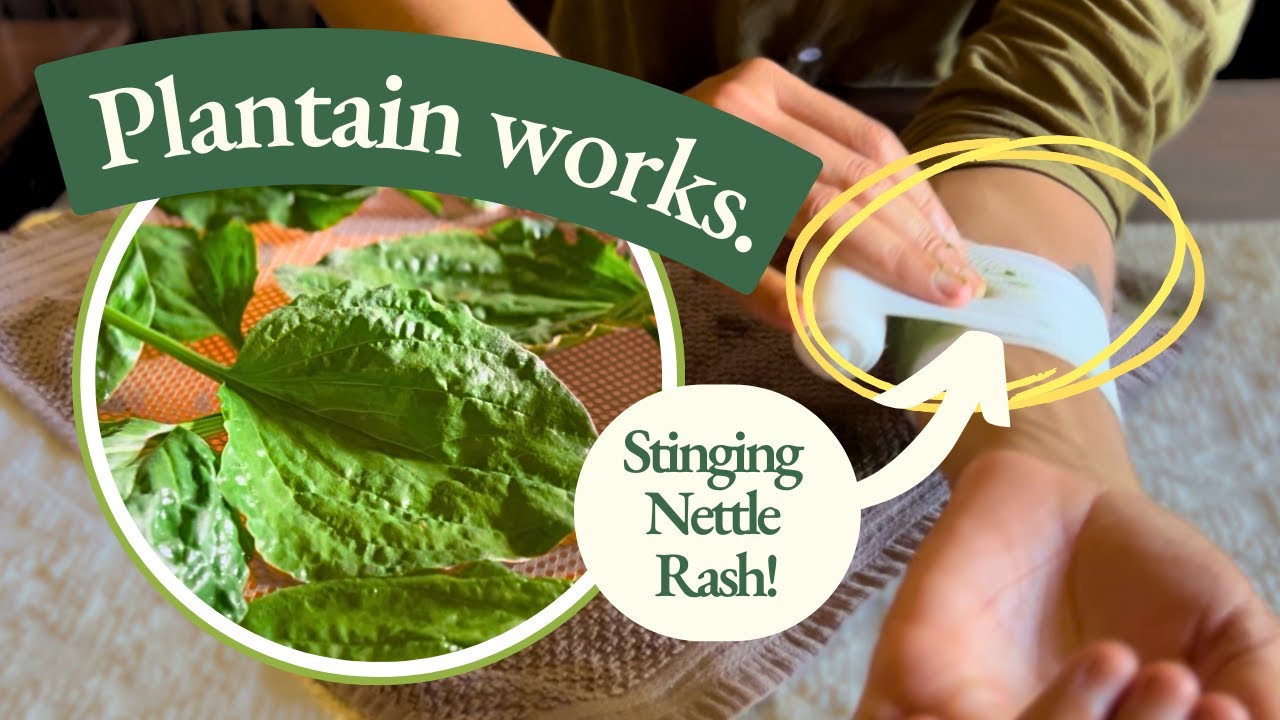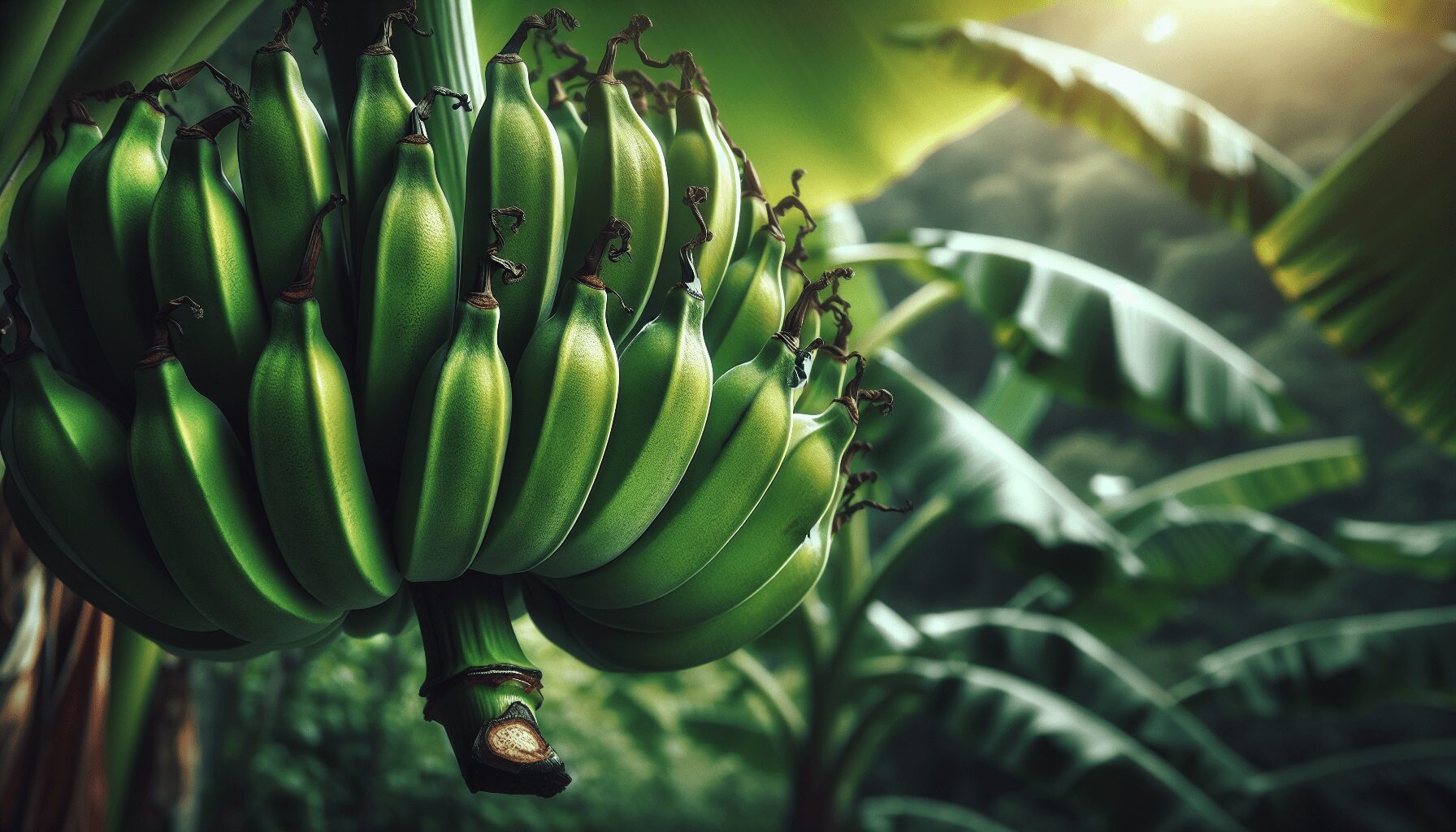Plantain is a versatile herb often found right under your feet, boasting numerous health benefits and medicinal uses. In this article, you’ll explore its anti-inflammatory properties, how it can aid in wound healing, and even how to create a simple yet effective plantain poultice and salve.
You’ll discover how plantain can serve as a remedy for ailments like inflammatory bowel disease and acid reflux, while also gaining practical knowledge on making your own herbal salve at home. Whether you’re a seasoned herbalist or a curious beginner, this guide offers insightful tips and hands-on instructions to empower you to utilize plantain in your daily life.
Plantain! Health Benefits, Medicinal Uses + How to Make a Plantain Poultice & Salve
Are you curious about the many uses and benefits of plantain? Great! Let’s dive into this versatile herb, from its health benefits to how you can create your own plantain poultice and salve.

This image is property of i.ytimg.com.
Plantain Overview
Commonality and Distribution
Plantain is an incredibly common herb that grows all over the world. You’ll find it along footpaths, bike trails, roadsides, and even in your own backyard. Its ability to withstand trampling and compaction makes it a resilient plant that thrives in many environments, from urban areas to rural landscapes. Whether you’re in North America, Europe, or Asia, chances are, plantain is growing nearby.
Plantago Major vs. Plantago Lanola
There are two main medicinal species of plantain: Plantago major and Plantago lanceolata. Plantago major, also known as broadleaf plantain, has broader leaves with longer seed heads. Plantago lanceolata, often called ribwort plantain, has narrow leaves and more stubby seed heads. Both species offer similar health benefits, but for this article, we’ll focus primarily on Plantago major.
Historical Context
Plantain has a rich history. Native to Eurasia, it was brought to North America by colonists and became known as “White Man’s Footprint” by indigenous Americans because it often sprouted in the compacted soil left by wagon wheels. This perennial herb has been utilized in medicinal practices for centuries and remains a staple in herbalism today.
Health Benefits of Plantain
Nutritional Profile
Plantain leaves and seeds are nutrient-dense. They contain vitamins A, C, and K, along with minerals like calcium and magnesium. The seeds are especially high in fiber, making them an excellent bulk laxative.
Anti-Inflammatory Properties
One of plantain’s standout characteristics is its anti-inflammatory properties. Taken internally, it can combat inflammation in conditions like inflammatory bowel disease. Externally, it can reduce swelling and relieve discomfort from rashes, insect bites, and other skin irritations.
Digestive Health
Plantain is beneficial for digestive health. Its mucilaginous seeds help protect the stomach lining, reduce stomach acid, and prevent ulcers. The leaves also contain compounds that support liver function, reducing the presence of harmful enzymes that contribute to liver degradation.
Wound Healing and Infection Control
Externally, plantain accelerates wound healing. It has astringent qualities that help draw out infections and promote faster recovery. This makes it invaluable for treating minor cuts, bee stings, and even pulling out splinters.
Medicinal Uses of Plantain
Internal Uses: Conditions Addressed
Internally, plantain can be used to treat a variety of conditions. These include inflammatory bowel disease, acid reflux, and general digestive discomfort. Its anti-inflammatory and mucilaginous properties make it a versatile herb for internal healing.
External Uses: Wound Healing
Externally, plantain is a go-to herb for wound healing. Whether you’ve been stung by a bee, irritated by a nettle, or scratched by brambles, plantain can help. Simply make a poultice (more on that later) and apply it to the affected area for relief and faster healing.
Unique Applications: Stinging Nettle Treatment
One of the unique applications of plantain is its effectiveness against stinging nettle rash. A plantain poultice can quickly reduce the swelling, redness, and pain associated with nettle stings, thanks to its natural anti-inflammatory and analgesic properties.
Plantain Identification and Harvesting
Identifying Characteristics
You can identify plantain by its broad, oval-shaped leaves that grow in a rosette pattern close to the ground. The leaves have prominent veins and when you break a stem, you’ll notice thread-like fibers. Both Plantago major and Plantago lanceolata share these characteristics.
Optimal Harvesting Times
The best time to harvest plantain is during the growing season, typically from spring to early autumn. Young leaves are preferable for consumption and medicinal use, as they are more tender and potent.
Sustainable Harvesting Practices
To ensure you have a continuous supply of plantain, practice sustainable harvesting. This means picking leaves selectively rather than uprooting entire plants, which allows the plant to continue growing and producing more leaves.

How to Make a Plantain Poultice
Materials Needed
- Fresh plantain leaves
- Clean water
- A mortar and pestle (optional)
- A clean cloth or bandage
Steps to Prepare a Poultice
- Identify and Harvest: Gather fresh plantain leaves.
- Clean: Rinse them thoroughly under clean water.
- Mush It Up: Chew the leaves if you’re in the field, or use a mortar and pestle to crush them into a mushy consistency.
- Apply: Apply the mush directly to the affected area.
- Secure: Cover with a clean cloth or bandage to hold the poultice in place.
Application and Effectiveness
Apply the poultice as soon as possible for the best results. Leave it on for about 20 minutes. You’ll notice a significant reduction in swelling, redness, and pain, as well as faster healing.
Experiment: Plantain Poultice on Stinging Nettle Rash
Personal Experiment Overview
I conducted a personal experiment to test the effectiveness of a plantain spit poultice on a stinging nettle rash. This involved stinging both of my arms with nettle and treating one with plantain while leaving the other untreated.
Methodology: Stinging Both Arms
I used a fresh nettle plant to sting both of my arms equally. Then, I chewed up a few plantain leaves and applied the mush to one arm, covering it with a bandage for about 20 minutes.
Results and Observations
The results were clear: the arm treated with plantain had significantly reduced swelling and redness compared to the untreated arm. The pain diminished quickly, showcasing plantain’s remarkable healing properties.

How to Make a Plantain Salve
Ingredients and Tools Required
- Dried plantain leaves (2 cups)
- Olive oil (enough to cover the plant material)
- Dried calendula and yarrow (2 cups each, optional)
- Beeswax (2 oz per cup of infused oil)
- Container for storage (preferably amber glass jars)
- Double boiler
- Fine mesh strainer or cheesecloth
- Essential oils (optional)
Infusion Process: Olive Oil, Calendula, Yarrow, and Plantain
- Combine Dried Herbs: Mix the dried plantain, calendula, and yarrow with olive oil in a clean jar.
- Infuse: Let the mixture sit for about a month in a cool, dark place, shaking it occasionally.
Steps for Salve Preparation
- Strain the Oil: After a month, strain the oil using a fine mesh strainer or cheesecloth to remove the plant material.
- Measure Ingredients: For every cup of infused oil, measure 2 oz of beeswax.
- Melt the Beeswax: Using a double boiler, melt the beeswax.
- Mix: Slowly add the strained oil to the melted beeswax, stirring constantly.
- Optional Enhancement: Add finely powdered plantain to increase the benefits.
- Pour: Pour the mixture into clean jars and let it cool.
Adding Essential Oils for Enhanced Benefits
Add essential oils like lavender or tea tree oil for additional antibacterial properties and a pleasant aroma. You can add a few drops to the mixture before pouring it into jars.
Storage and Usage of Plantain Salve
Proper Storage Methods
Store your plantain salve in amber glass jars to protect it from light, which can degrade the quality of the oils. Keep it in a cool, dark place.
Application Techniques
Apply a small amount of the salve directly to wounds, rashes, bites, or any irritated skin area. It can be used as needed for relief and healing.
Shelf Life and Preservation Tips
Your plantain salve should last about a year if stored properly. To extend its shelf life, ensure that the jars and materials used are thoroughly clean before preparation. Adding vitamin E oil can also act as a natural preservative.
Resources for Further Learning
Recommended Herbalism Books
For those interested in diving deeper into herbal medicine, books such as “The Herbal Medicine-Maker’s Handbook” by James Green and “Rosemary Gladstar’s Medicinal Herbs: A Beginner’s Guide” are excellent starting points.
Useful Kitchen Tools and Products
Having the right tools can make your herbal projects easier and more efficient. Items like a high-quality mortar and pestle, amber glass jars, and a double boiler are essential.
Online Resources and Communities
Joining online herbalism communities can provide valuable insights and support. Websites, forums, and social media groups dedicated to herbalism are excellent resources for shared knowledge and advice.
Conclusion
Recap of Key Points
In this article, we explored the various benefits and uses of plantain. We covered its internal and external medicinal applications, explained how to make a plantain poultice and salve, and discussed its historical and nutritional profile.
Encouragement to Experiment Safely
Plantain is a remarkable herb, and I encourage you to experiment with it. However, always ensure you are identifying the plant correctly and consult with a healthcare professional if you have any medical conditions.
Final Thoughts and Viewer Engagement
Thank you for joining me on this herbal journey. Plantain is more than just a weed; it’s a powerful herb with incredible benefits. Give these recipes a try, and don’t forget to share your experiences and results. Stay safe, explore, and enjoy the wonders of herbal medicine!